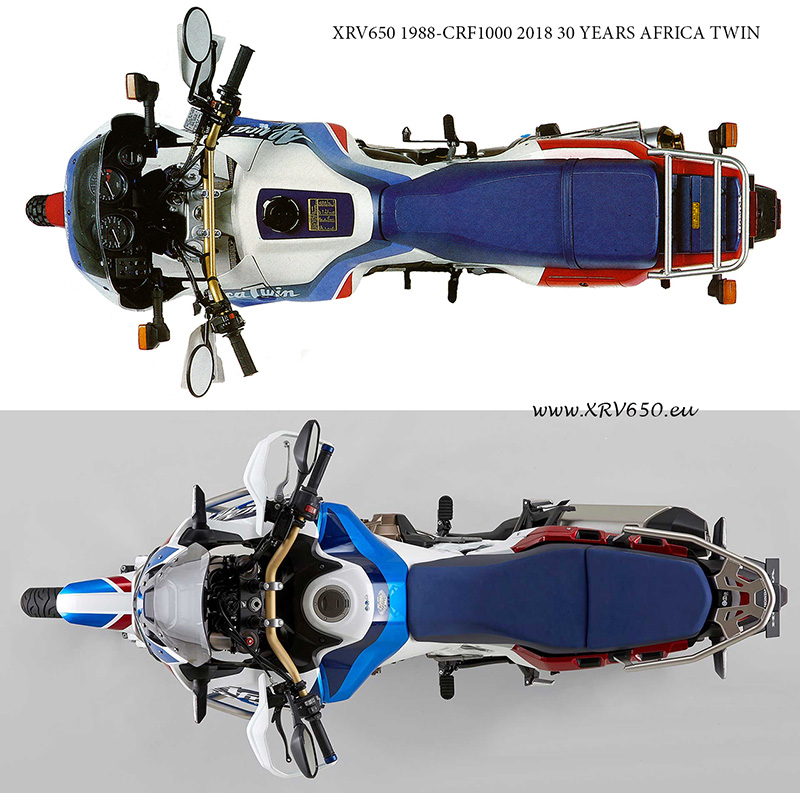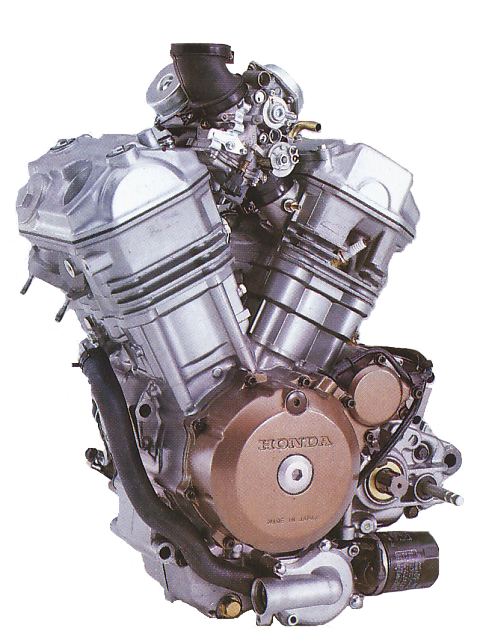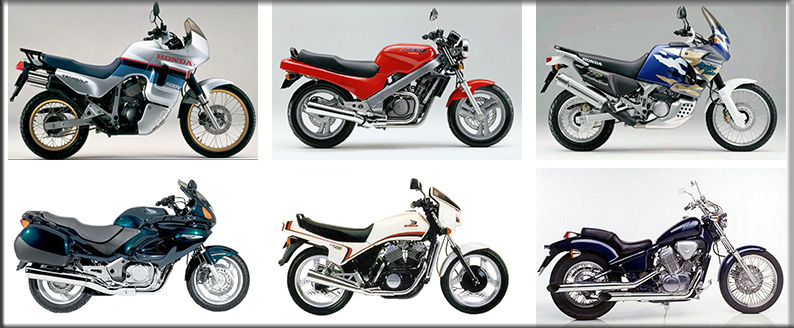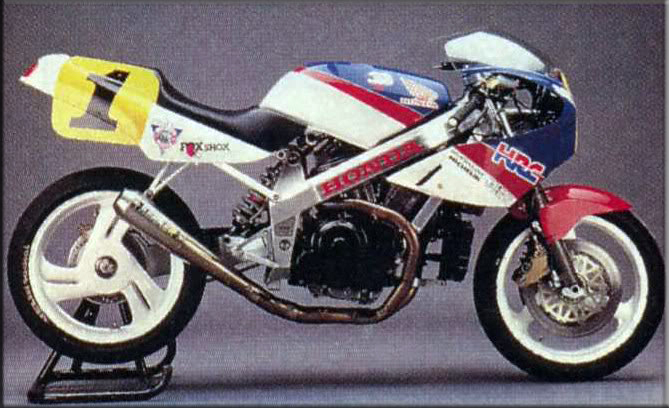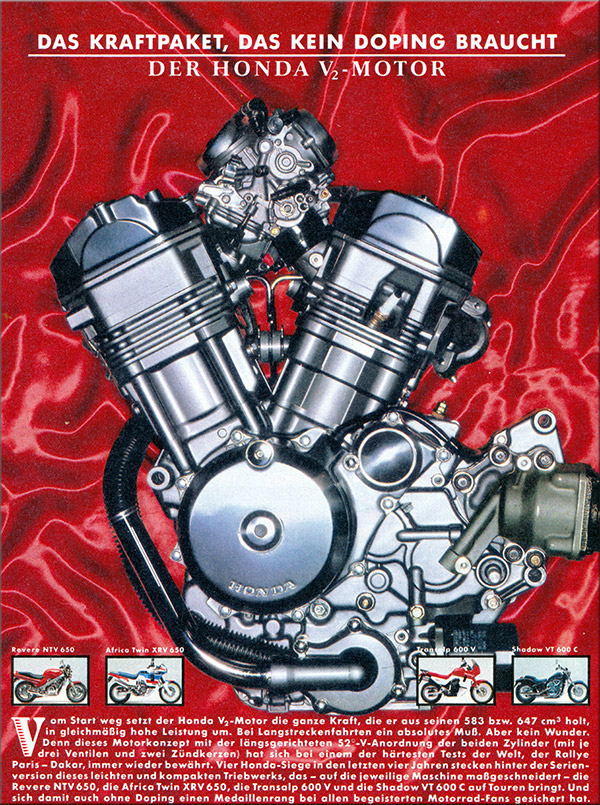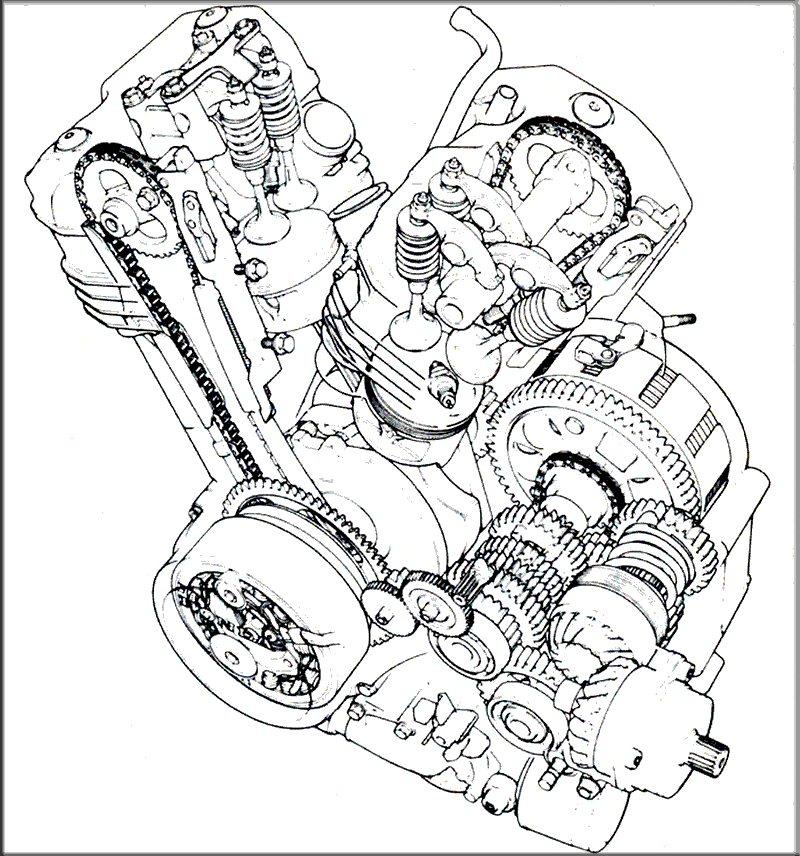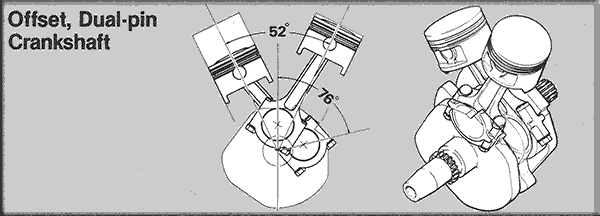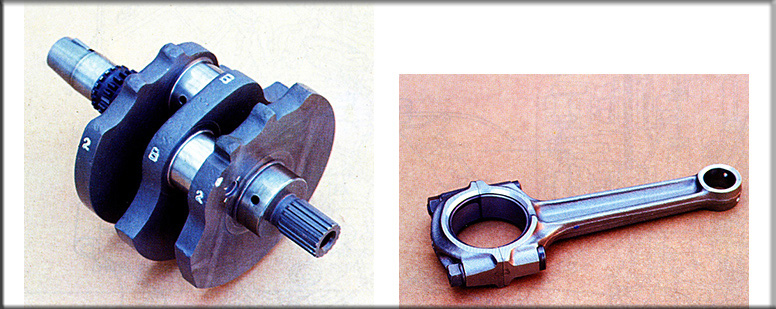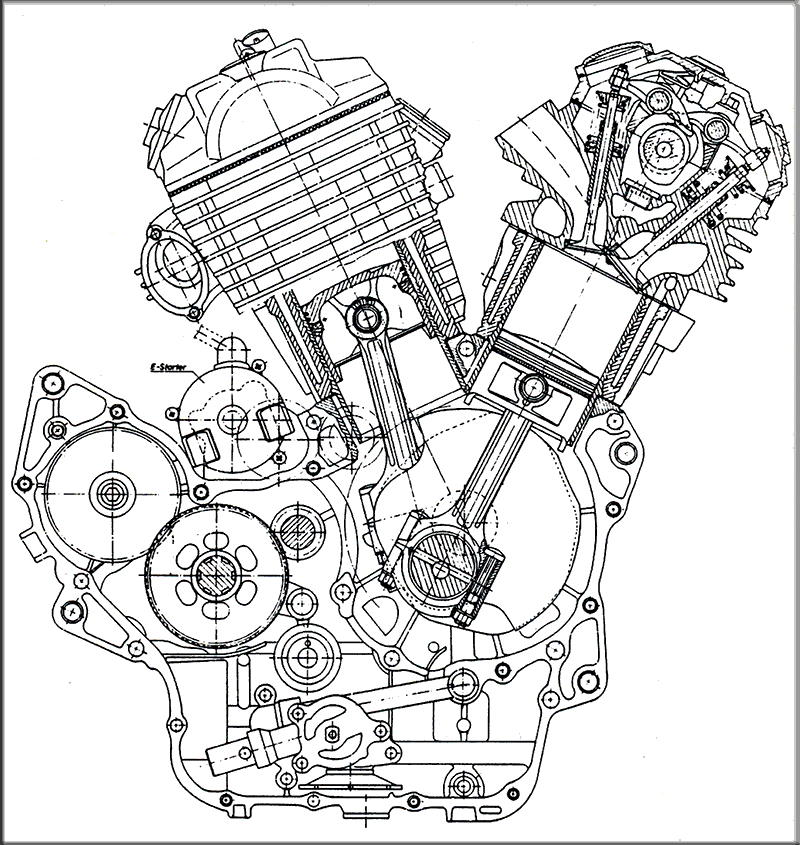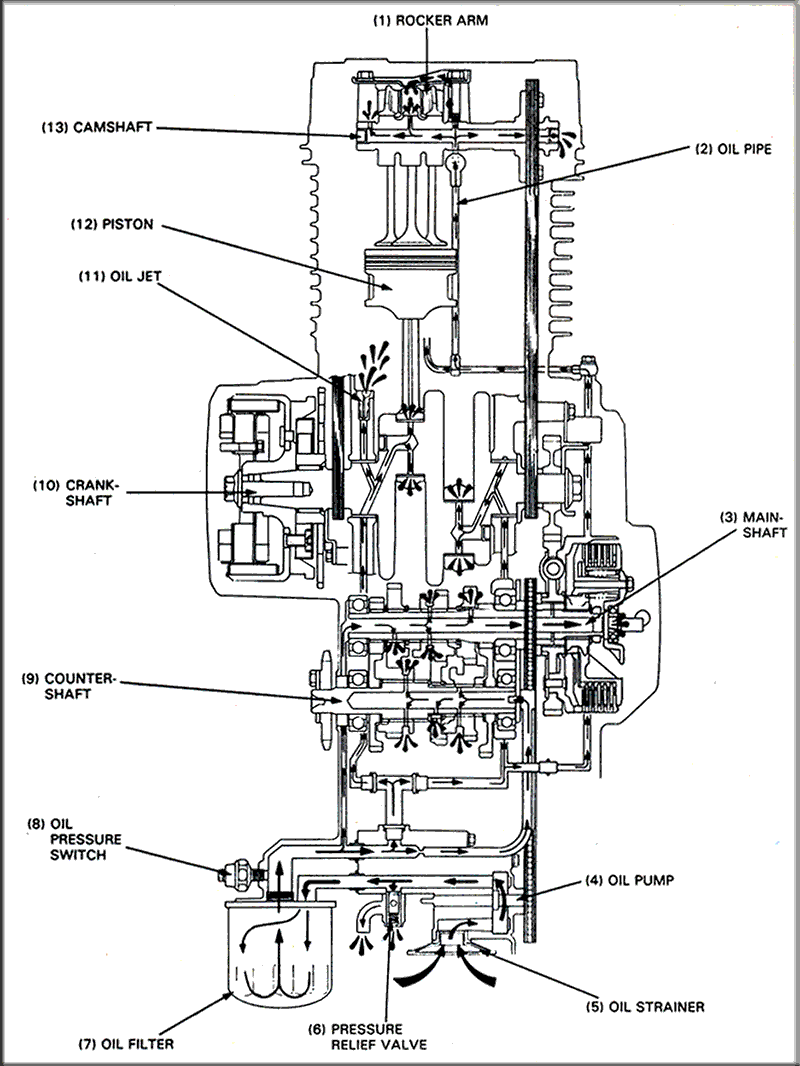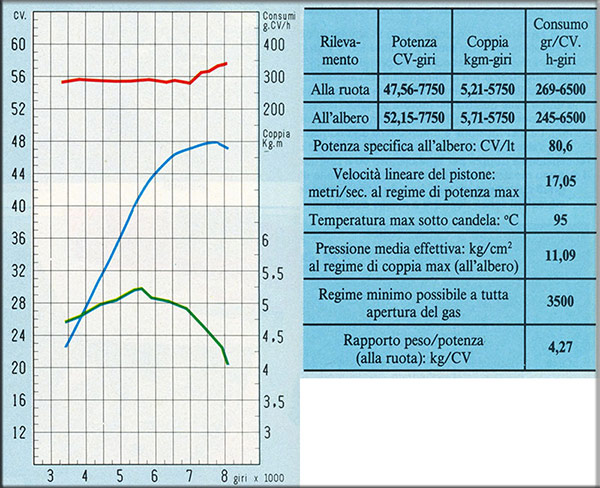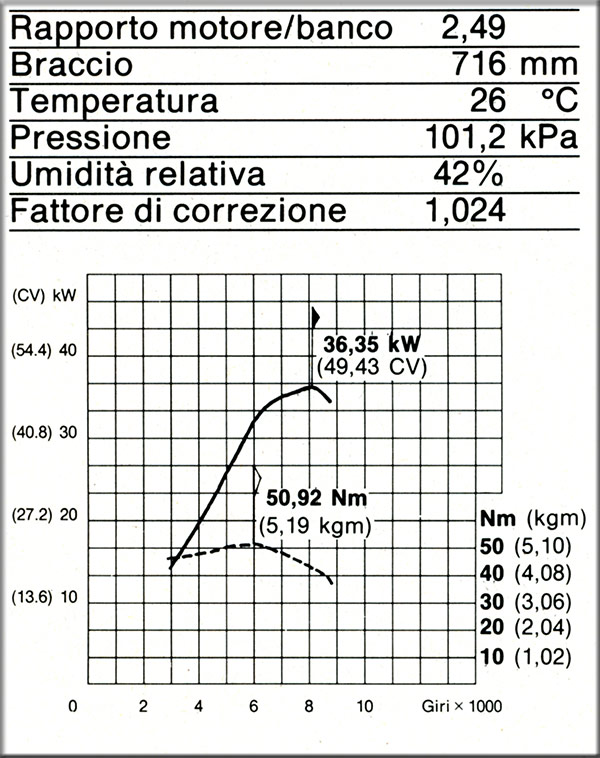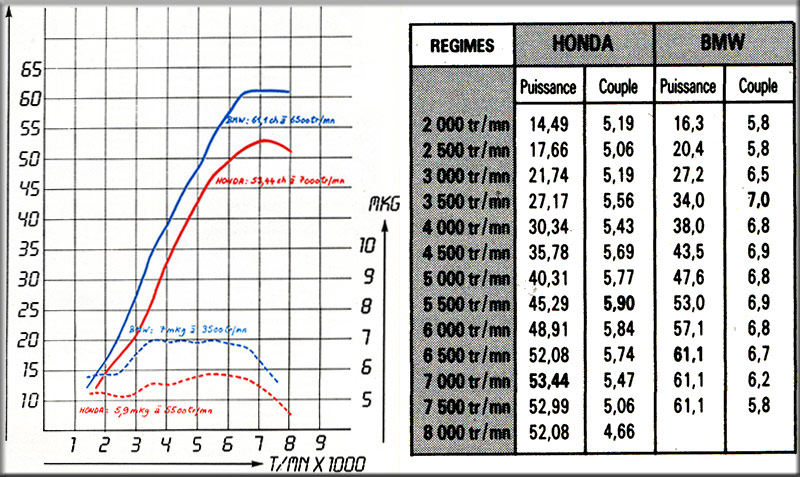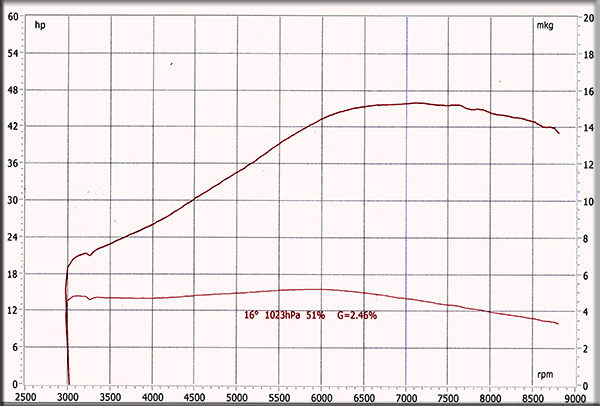A bit of a history
The engine Honda has equipped the XRV 650, was initially presented in the VT 500, in the 1982 Cologne (Köln) Motorsport World Expo. It’s the forefather of a series of engines – still under production – which have equipped various types of motorcycles. In addition to the VT 500 and the VT 500FT (Ascot), this engine was used in the Bross 600 (650, later on) for the Japanese market, the NTV Reverse 600/650 for the European market and the Hawk GT 650 for U.S. market. For the same market also, VT 600C Shadow was presented in 1988. The Deauville 650 was initially presented in 1997 and came with the 700 cc version in 2006. The Transalp 600 was initially released in 1987. The Transalp having a world-wide success, it grew to 650 cc in 2000 and to 700cc in 2008. This “engines-family” despite the fact that it had its version changed three times, by increasing the cubism and the horsepower, preserved its spirit unaltered. The first Africa Twin, the XRV 650, got equipped with the bigger version of the NTV motor in 1988 and in 1990 she got even bigger with the 750cc motor. The XRV twin-cylinder V-52o engine has the same essential structure with that of the Transalp, but with several of its peripherals having changed. The XRV 750 remained in production line until 2002. Ten years after (in nowadays - 2012), this twin-cylinder V-52o engine is still under production, mounted on Transalp XLV 700 and on Deauville 700.
Pic. Some of the Honda models equipped with V-Twin.
Pic. The twin-cylinder V-52o motor had a glorious career in the US in the Hawk 650 RC31, which now is considered to be a cult motorbike. In the picture the RC31 (700cc) of the Two Brother Racing, which won the GP2 class championship in 1989.
The following table shows the evolution of the Honda V-Twin, from the 491cc of the VT500 to the 742cc of the XRV, by increasing the diameter of the piston and the stroke distance.
Model |
Bore |
Stroke |
cc |
VT500 |
71 |
62 |
491 |
Trnsalp600,Shadow, Bros, Revere |
75 |
66 |
583 |
Trasalp650,XRV650, Revere,GT,Bros,Deauville |
79 |
66 |
647 |
Transalp700, Deauville |
81 |
66 |
680,20 |
XRV750 |
81 |
72 |
742 |
It has been broadly claimed, that the most effective use of the V-Twin 52o engine, is for the middle cubism motorbikes and that increasing the cubism to 742ccbrings the motor to its limits. The subsequent heavier crankshaft, as well as the bigger piston and rod, result in reduced agility and increased vibrations for the engine. Perhaps, this could be the explanation for the discontinuation of such a successful model as the Africa Twin. Nevertheless, there is always the hope for a new production of the XRV 650, like models of other companies, which have come to be considered as the best of their kind.
Advertisement of the Honda V-Twin engine, in the German 1989 Motorrad magazine.
Pic: A blueprint of the VT 500 engine, with which Honda initiated the V 52o series. In this model, transmission was with axle.
Specifications
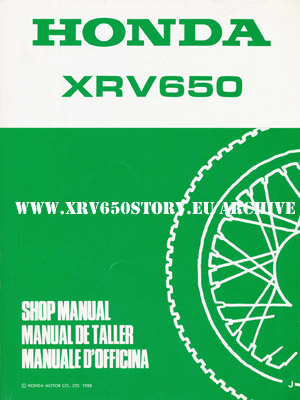
XRV 650 motor specifications from the Honda Shop Manual.
Click on to get them in PDF file.
The XRV 650 engine is a V twin-cylinder, with the pistons at the angle of 52o (see the picture bellow). According to the formula “V= 180-(2 x 52) = 76”, invented and applied by Honda, the corresponded angle between the piston-rods is of 76o. That means a crankpins offset of 76o, resulting in a better mechanical balance and subsequently reducing vibration and other stresses. Thus compensates the mechanical design compared to a V-twin engine with an angle of 90°, which inherently gives a very good mechanical balance. Due to specific crankpins offset, applied on the engine of Africa Twin, no balance shaft is required. The elastic collars of the engine mounting are adequate for the amortization of the inherent to motor’s design vibrations.
Pic. The most interesting and innovated solution, used in all Honda’s V 52 engines.
The “big end” of the piston-rods (the correct term is “connecting rod”) is sectional, because the three counterweights crankshaft, is monolithic.
Pic: The crankshaft is made of high fatigue strength steel, with increased diameter for rigidness. At the right is the connecting rod.
The engine has three valves per cylinder, (a single large exhaust valve and two smaller intake valves) – working with a single overhead camshaft. The three valve design was used by Honda in the parallel-twins of CB 250/400 N. In the XRV the valves are pushed by 3 rocker-arms installed on the same abutment of the cylinder head. The camshaft is turned by a chain with automatic tensioner. The three valve design, combined with the overhead camshaft, do not allow a single spark plug to be located at the centre. Thus XRV has 2 spark plugs per cylinder, located at the opposite sides of the combustion chamber, to burn all of the mixture as completely as possible. The cylinder blocks are made of aluminum, chromium-coated. Pistons are also made of aluminum wearing 3 rings each.
Pic: The above picture shows clearly the valves array, the locations of the spark plugs inside the semi-spherical combustion chamber. The right picture shows the external of the cylinder head, with the abutments of the camshaft holders.
Pic: A VT 500 engine blueprint, depicting the valves being pushed by the rocker arms.
The lubrication system is of wet-sump (pan), pressure fed, with a chain driven oil pump housed in the crankcase and an inbuilt pressure regulator, adjusted for 4.5 bars at 6,000 rpm. Two oil nozzles are mounted at the lowest point of the pistons for their lubrication.
Pic: Image of the wet-sump lubrication system with a trochoid gear-type oil pump. The oil tubes with their nozzles injecting from the lowest point of the pistons, contribute to the heat abduction and to the improvement of the connection rods lubrication.
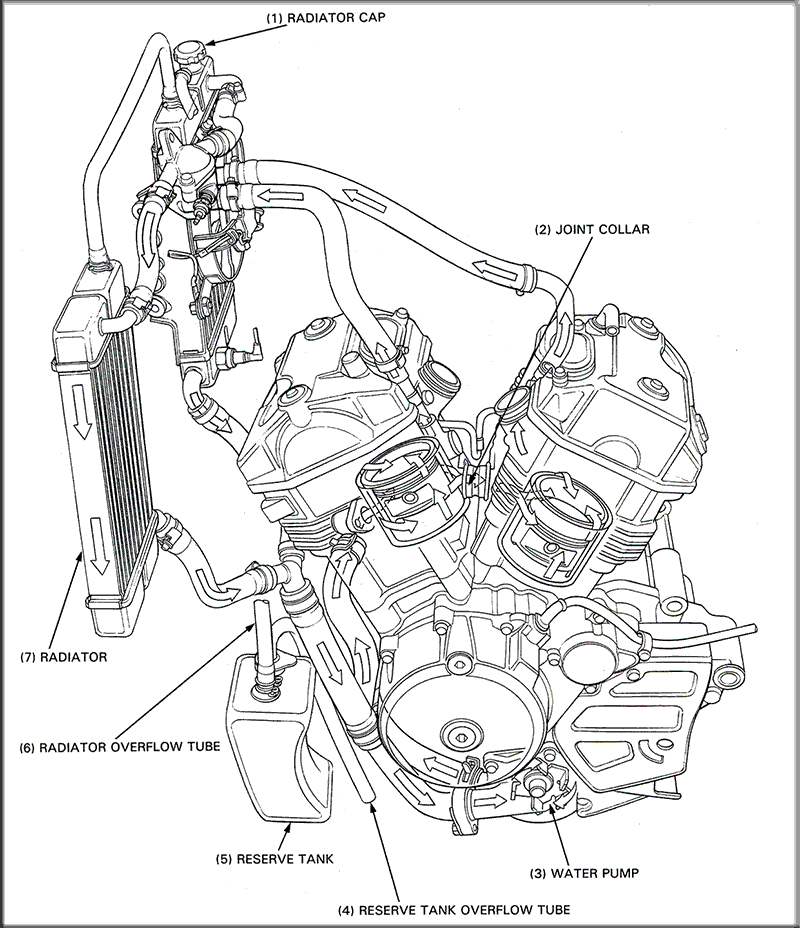
Pic: Blueprint of the engine cooling system. Dual aluminum radiators, the right side fitted with a thermo switch controlled electric fan.
The solutions which Honda chose for the design of this engine are simple and quite functional. A V-twin of 90° has a much better mechanical balance. On the other hand, a V-twin with an angle of less than 90°, is more compact and has more even firing intervals, but has significantly poorer mechanical balance. Honda used the crankshaft design with the crankpins offset of 76o to reduce the resulting vibration and at the same time to have a more compact engine. In addition, the design of the transmission with the countershaft on the top of the main shaft resulted in a more compact size. The compact size of the engine allows more alternatives to be chosen for the design of the frame, in order to have more mass closer to the centre of gravity. The reliability of the V 52 has been fully accepted after a 30 years of successful usage, until nowadays.
Horse Power-Torque
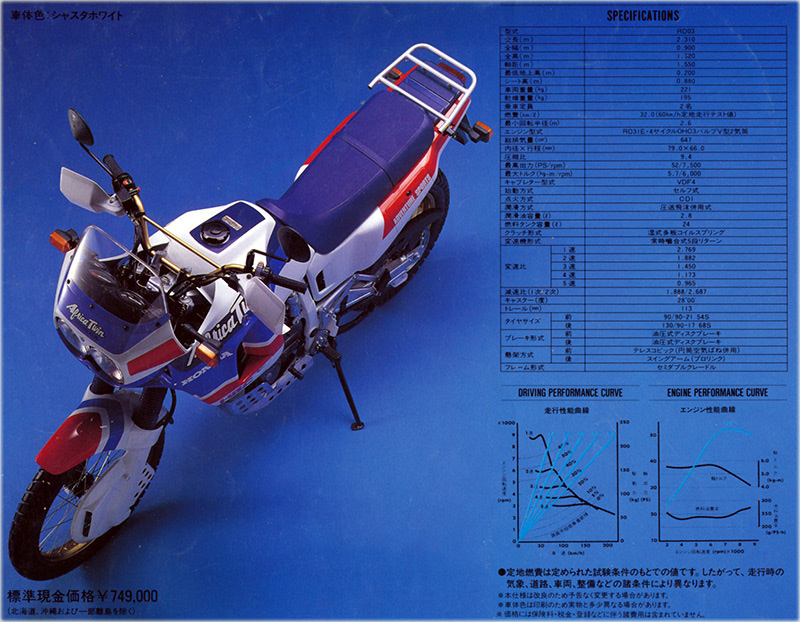
In the Honda Sales Manual is written: “Power and torque delivery has been optimized, particularly in the low- and mid- rpm ranges, to give the traction demanded by a wide range of riding conditions, the flexibility for low-fatigue long-distance riding and the controllability off-road riding requires.”
According to Hamamatsu house, the XRV engine crankshaft ratings are: 57 PS at 8,000 rpm and 6,2 kgm at 6,000 rpm. The torque remains unaltered in a broad area of the rpm diagram, giving the ideal “linear” performance.
Notice that: 1 PS=1 CV=1 ch=1 HP(metric).
 The official power, torue and driving performance diagramms.
The official power, torue and driving performance diagramms.
Let’s examine if the moto magazines of that time, did had any discrepancies regarding these ratings.
The Italian Motociclilsmo, gives wheel: power 47,56 CV/7750 rpm and torque 5,21Kgm/5750 rpm - crankshaft: power 52,15 CV/ 7750 rpm and torque 5,71CV/ 5750.
Pic: Motociclismo, July 1988.
Another Italian magazine, the Motosprint, gives higher wheel power and torque:
Power 49,43 CV/8100 rpm & torque 5,19 Kgr/ 6000 rpm.






